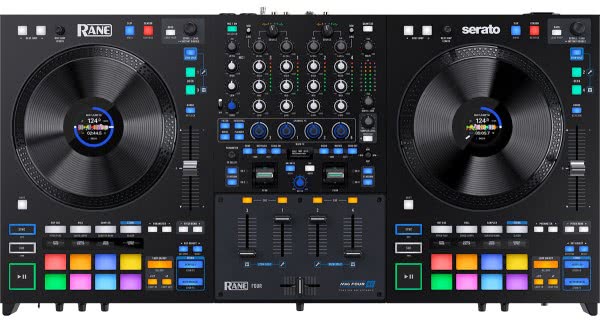Rane has just announced its brand new 4 channel controller, tha Rane Four which will hopefully hit the store in Q1 2023.
Why the announcement now if the product is not available?
Because it is the first controller designed for the new Stems feature in Serato 3.0 (currently only the Beta version is available). Stems are the most important new feature and they allow you to separate different layers of your track, such as Vocals, Bass, Drums and Melody. After watching some demo videos, they seem so much fun, that even DJs who never play vocal tracks will probably want to play with them.
They are paired with Stem effects: Vocal Echo, Instrumental Echo, Instrumental Braker, and Drums Echo - each effect can be layered on your stems.
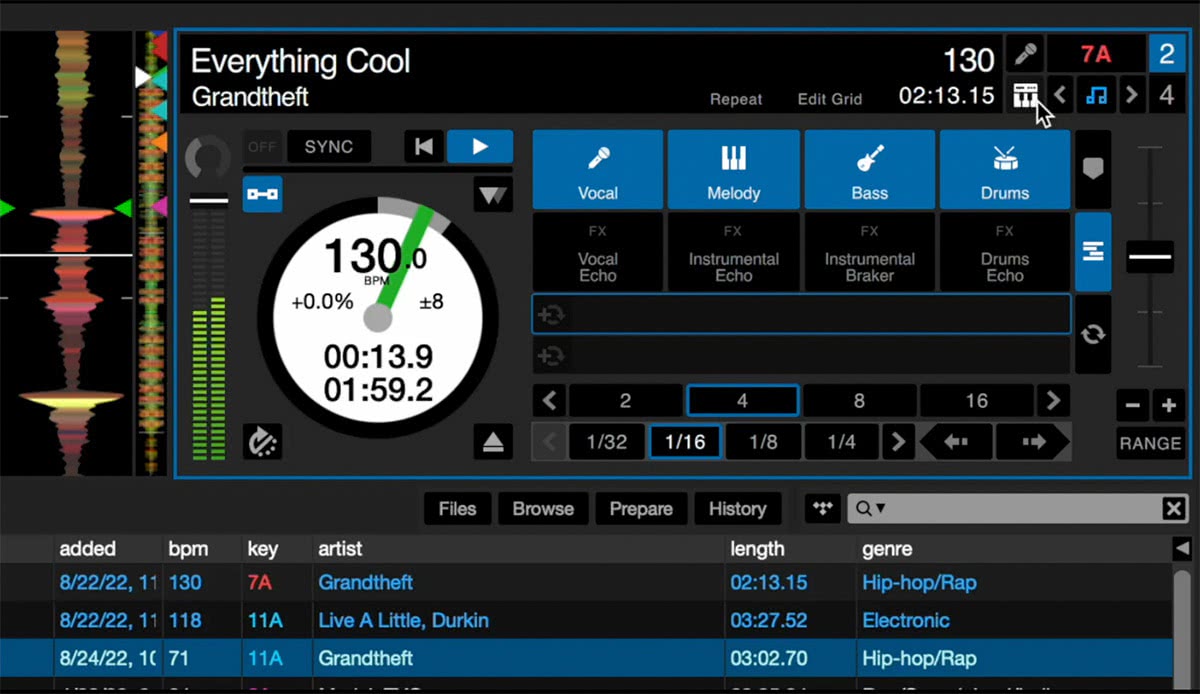
The new Stems controls can take the place of the standard pad controls on most Serato compatible hardware, and they can also be mapped to any MIDI controller. At first look, the analysis seems very impressive and accurate, but nowhere near perfect as the software can analyze based on the frequency spectrum and all four elements share the same frequencies at some point so it is difficult to divide them accurately. They are however good enough to confidently use them in live sets.
Be aware that it might require some extra performance from your CPU, especially if you keep the Auto Stems Analysis enabled.
To use Stems, you have to drag one more more tracks to the Stems crate, and Serato will analyze them, separate the four main elements and create a stem file for each track. Stem files can take up some place on your hard drive, as they are usually over double the size of the original audio track.
You can already mess around with this if you are willing to install the Serato 3.0 Beta.
But let’s get back to the hardware!
Sadly, we don’t have access to it yet, but Rane has already published its main features on their website.
As expected, it will share the same solid build quality as other Rane devices, and it will have a metallic housing.
One thing that surprises us is that it doesn’t come with moving platters, like the Rane One, but as its design and 4 channels suggest, it is not a battle controller, it is rather a powerhouse for Serato DJ, that allows you to deep dive into Stems, chop up your tracks in unique ways, and create something new every single time.
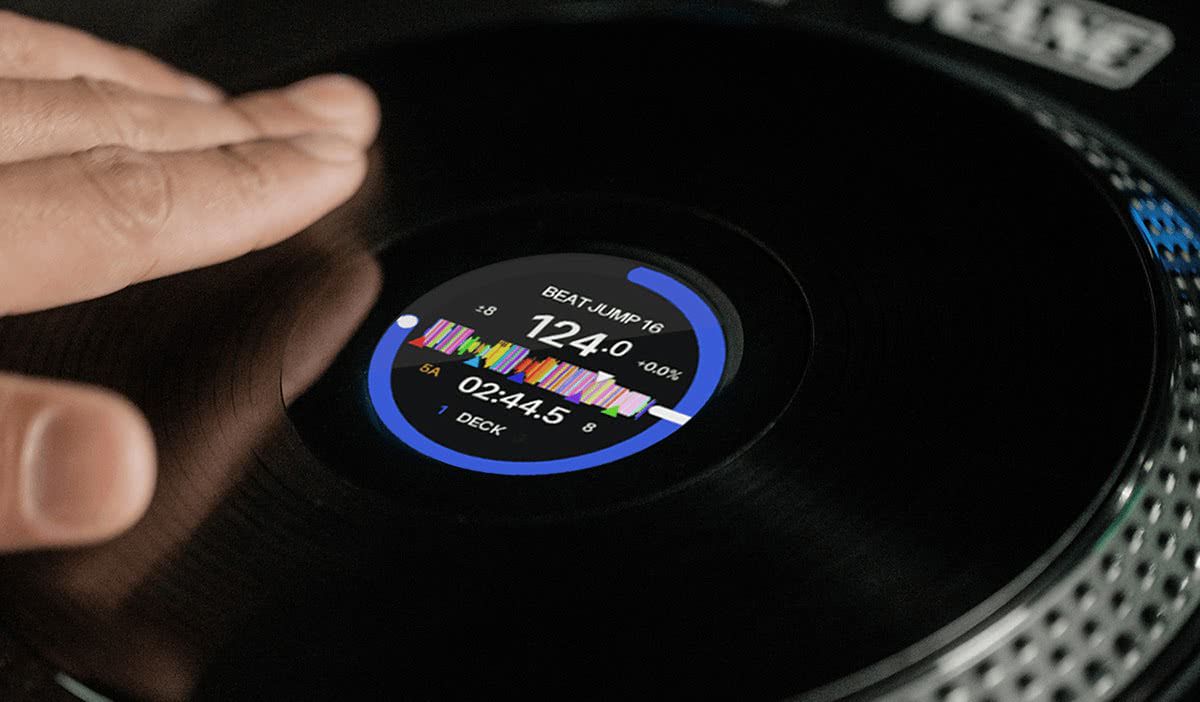
So the static platters make sense, especially because we have never seen traditional jog wheels on any Rane device so far, therefore the static platters are somewhat of a safe bet, as they can reach a large category of DJs, without compromising the turntablist aspect that Rane generally represents.
At the end of the day, they are still a pair of jogwheels, with a design that resembles traditional turntables.
The large 8.5” platters will definitely be good for scratching, and some lucky users who got their hands on it physically attest that they have a fair amount of resistance, that is perfect for scratching and back-cueing.
The performance pads are now accompanied by OLED displays that show cue point times, names, beat divisions, or names of your samples. At first look they seem rather smallish, it remains to see how they perform in action.
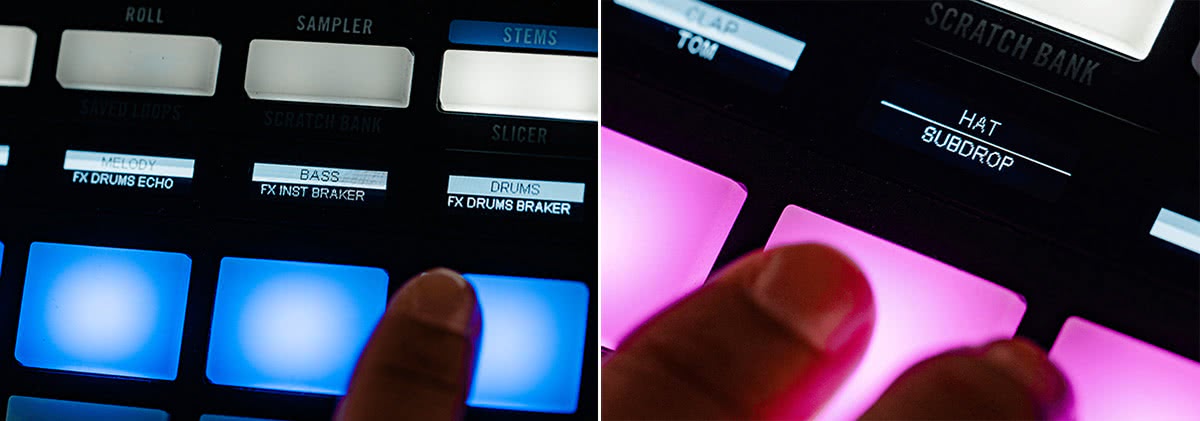
The Rane Four finally has on-board effects, so you won’t have to rely on Serato FX only. It has 22 built-in effects which is quite a variety and we can hardly wait to test them. They can be toggled on and off or on hold with the two pedal switches.
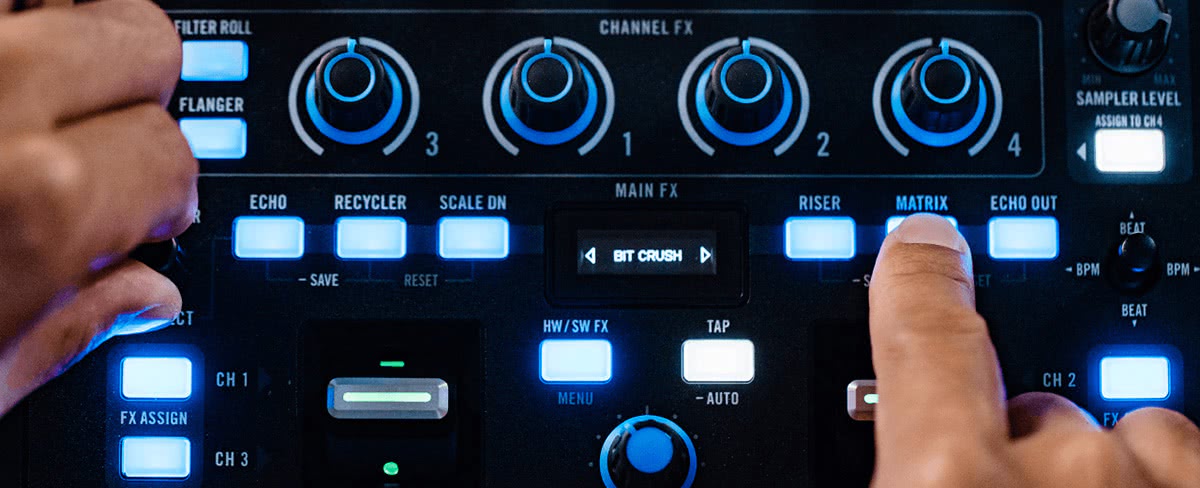
The software FX is complemented with the 4 Channel FX knobs, which control Serato’s built in effects.
Combining both effects with Stems will probably result in some very unique and expressive ways to perform, especially if you are playing tracks with vocals.
The Rane Four will allow you instant Stems performances with the Stem-Split button, which will divide the Instrumental part and the Acapella of a given track and split it between two decks. After that, you can further mess around with each element, chop them up and add FX to them, this will certainly be a whole lot of fun!
The dedicated Stems section lets you isolate or subtract the vocals or instruments of any track at any time with a quick button tap, and without leaving your currently selected Performance Pad mode. Perfect for live blends, remixes, and acapella-out-style mixing.
In terms of connectivity, it will certainly not disappoint, as we will get:
- 2 x XLR outputs (Main)
- 2 x 6.3 Jack outputs (Booth)
- 1 x RCA stereo output pair (Main)
- 2 x XLR / 6.3 Jack combo MIC inputs
- 2 x RCA stereo inputs on Deck 3-4, so you will be able to hook up turntables or digital decks
- 2 x headphone outputs (6.3 mm and 3.5 mm jack)
- 2 x USB Type-B ports
- 1 x IEC power cable input
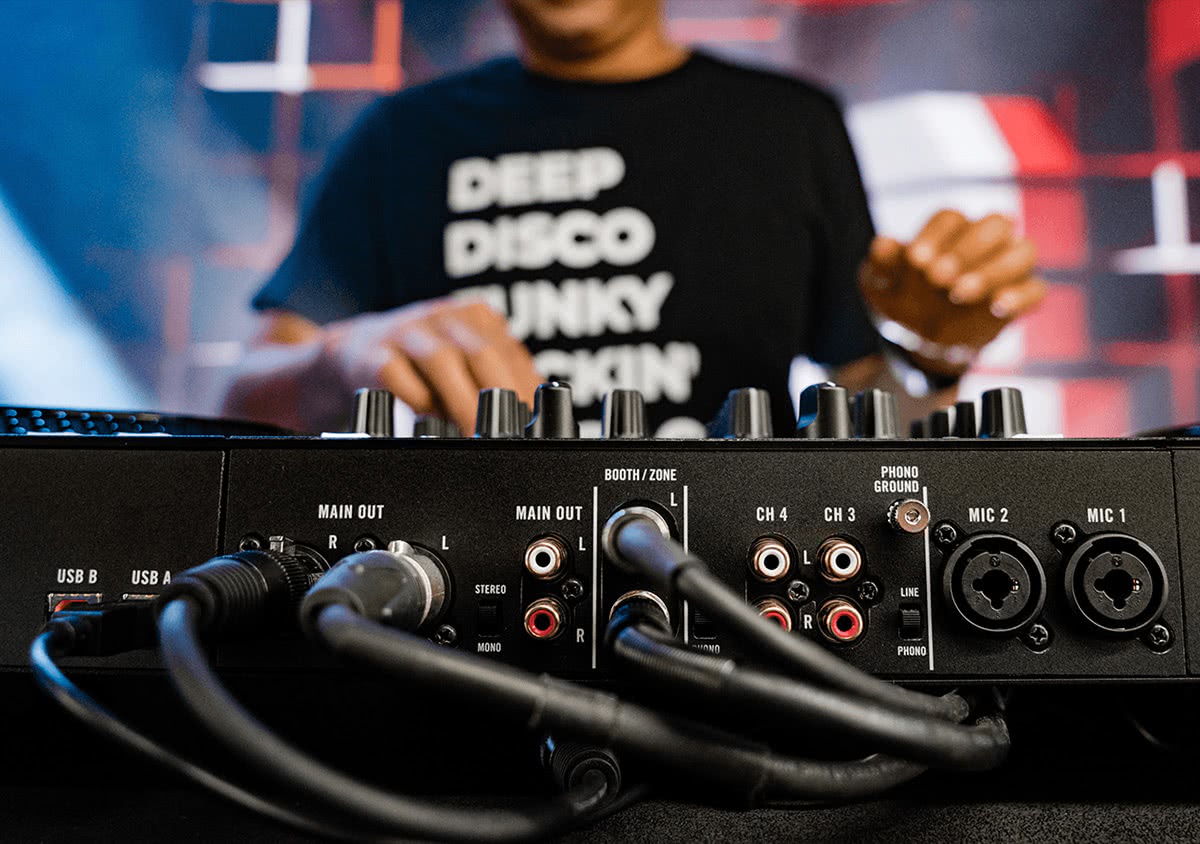
Currently there are only a few DEMO hardware available, so by the time it gets released we might see some minor modifications on the final version for the market, but most likely only in terms of firmware, and probably some mechanical adjustments. Its retail price hasn’t been announced yet, but we expect it to fall into the 2000 € category.
We can hardly wait to put our hands on it and do a proper review, until then, you can try the new Serato 3.0 and familiarize yourself with Stems, and Stems FX.

